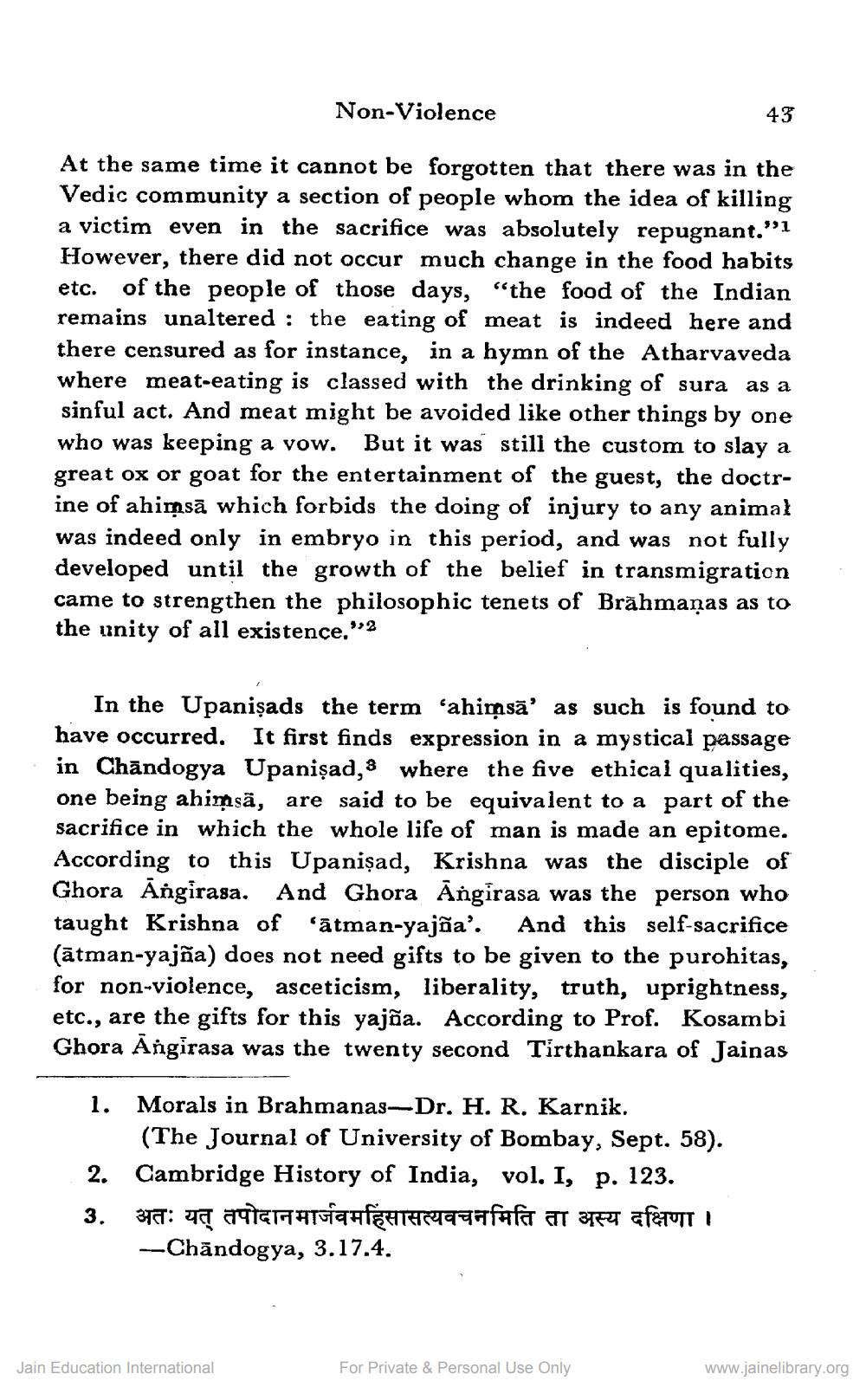________________
Non-Violence
At the same time it cannot be forgotten that there was in the Vedic community a section of people whom the idea of killing a victim even in the sacrifice was absolutely repugnant."1 However, there did not occur much change in the food habits
etc.
of the people of those days, "the food of the Indian remains unaltered: the eating of meat is indeed here and there censured as for instance, in a hymn of the Atharvaveda where meat-eating is classed with the drinking of sura as a sinful act. And meat might be avoided like other things by one who was keeping a vow. But it was still the custom to slay a great ox or goat for the entertainment of the guest, the doctrine of ahimsa which forbids the doing of injury to any animal was indeed only in embryo in this period, and was not fully developed until the growth of the belief in transmigration came to strengthen the philosophic tenets of Brahmanas as to the unity of all existence."2
In the Upanisads the term 'ahimsa' as such is found to have occurred. It first finds expression in a mystical passage in Chandogya Upanisad, where the five ethical qualities, one being ahimsa, are said to be equivalent to a part of the sacrifice in which the whole life of man is made an epitome. According to this Upanisad, Krishna was the disciple of Ghora Angirasa. And Ghora Angirasa was the person who taught Krishna of 'atman-yajña'. And this self-sacrifice (atman-yajña) does not need gifts to be given to the purohitas, for non-violence, asceticism, liberality, truth, uprightness, etc., are the gifts for this yajña. According to Prof. Kosambi Ghora Angirasa was the twenty second Tirthankara of Jainas
1. Morals in Brahmanas-Dr. H. R. Karnik.
(The Journal of University of Bombay, Sept. 58). 2. Cambridge History of India, vol. I, p. 123. अतः यत् तपोदानमार्जवमहिंसासत्यवचनमिति ता अस्य दक्षिणा । -Chandogya, 3.17.4.
3.
Jain Education International
43
For Private & Personal Use Only
www.jainelibrary.org




